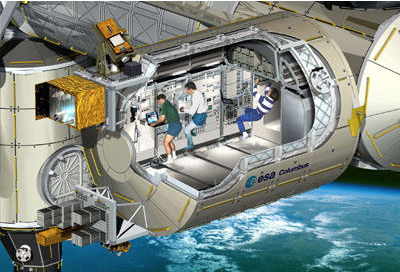[SatNews] Following the recent decision confirming the ESA-Airbus Defence and Space and European Data Relay System partnership, agreement has been reached with the European Commission for the provision of EDRS services to the EU Copernicus program. A related service contract has been signed between ESA and Airbus Defence and Space, securing EDRS services to the Copernicus Sentinel-1 and -2 dedicated missions, starting in 2015 until 2021, with an option for extension until 2028.
Like optical fibers on the Earth, EDRS, which is also referred to as SpaceDataHighway, will provide laser communications in Space with data rates of up to 1.8 Gigabits per second. EDRS will provide near-real-time data transfer from Earth observation satellites, drones or aircraft to Earth via Geostationary communication satellites. It will provide ESA with the ability to download larger volumes of image data faster and in a secure way, helping to improve environmental monitoring, disaster response and crisis management.
The agreement includes the setup of a Joint Steering Committee ensuring high-level representation of European Commission, ESA, and Airbus Defence and Space to monitor the EDRS status and evolution and to maintain EDRS as an autonomous European data relay capability.
ESA and Airbus Defence and Space also signed a service contract providing data relay capacity to other ESA and ESA partner missions in the future. As a first additional user, the International Space Station/ European Columbus module will be provided with data relay services starting in 2017, in support to scientific experiments and for enhancing communication services to the Astronauts on-board ISS.

Columbus European Module
The above confirms Copernicus and Columbus as initial EDRS anchor customers. It allows Airbus Defence and Space to invest into the completion and operations of EDRS. Airbus Defence and Space is expected to develop the third party commercial, institutional and military markets for EDRS services and to support the evolution of the system towards global coverage. The above agreements allow ESA to consolidate its support to the EDRS evolution as initiated at the 2014 ESA Ministerial Council with the GlobeNet Program.
“With this novel laser technology solution Europe establishes new standards for space communications,” said Evert Dudok, Head of Communications, Intelligence and Security (CIS) Business Line, Airbus Defence and Space. “Currently it can take 2 hours to download an image from an observation satellite but with EDRS it will take just minutes. In case of disasters such as floods & earthquakes, the availability of information within the shortest possible timeframe -typically 10-15 minutes after data acquisition- is crucial to react quickly in order to protect citizens and infrastructure.”
Following the recent successful in-flight characterization campaign of the first multi-gigabit optical inter-satellite link between the Copernicus Sentinel-1A and Alphasatsatellites equipped with Tesat’s Laser Communication Terminals (LCT), the confirmation of its anchor customers provides a solid foundation for EDRS, allowing ESA and its partners to implement the program as planned and secure its evolution.
EDRS allows for an entirely new approach of delivering data in quasi real-time, with space systems becoming part of the global Big Data challenge. Furthermore, EDRS has opened its interface specification to global standardization in support to cooperation with space agencies worldwide.